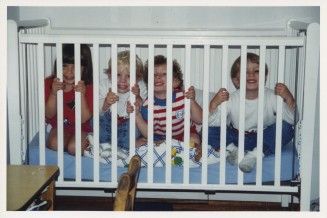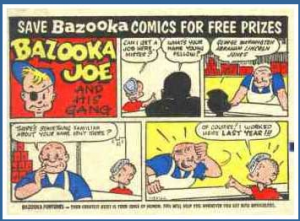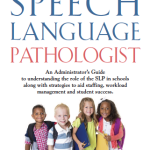Parent Information
This page is designed for parents who have questions about the child’s speech and language development. Please visit my other pages too, especially Your Middle Schooler even if your child is years away from the tween years. Please contact me if you have any specific questions or need information in any specific area of speech and language development.
Teresa
The Glory of Multiple Meaning Words…….Run or Run or Run
Understanding multiple meaning words is one of the first higher order language tasks that most children acquire naturally through reading and basic instruction. Younger children will also pick up dual meanings through kid type songs, jokes and phrases. For those students who demonstrate even slight language delays or impairments, understanding multiple meanings can be challenging. Without awareness and understanding of multiple meaning words, students may experience decreased comprehension, misunderstandings and the biggest problem of all ….they have difficulty understanding humor and slang. Basically these kids won’t “get it.”
So how do you teach the concept of multiple meanings? First the students have to learn that multiple meanings exist. The best way to start is with simple words. My all time favorite word is “run.” According to dictionary.com there are over 150 meanings for the word run and that doesn’t include its’s use in slang and idioms.
Starting with 10-15 meanings for the word run is a good place to begin. The initial “run activity” has to be dramatic and high energy. Let the kids generate as many meanings as they can on their own. After that gives hint and cues before giving the meanings. Use run in a sentences with specific meaning and act the meaning out if possible. Fill up that white board or paper (yes in this day and age SLP’s may not always have access to even a white board and a functioning marker). Act as if you never knew there were that many meanings for one word. Every little detail should be explained to make sure the kids can connect the different definitions to make them meaningful. This is a fun activity and kids always leave with a smile on their face.
In the following sessions the concept of multiple meaning words is reinforced by presenting other dual meaning words and using them in sentences. By teaching the concept of multiple meaning words the kids are being encouraged to use critical thinking skills rather than just drawing from a word bank. Using critical thinking to figure out meaning is one of the main keys to developing and use of higher order language. I do tell the kids that words with two meanings and the same spelling are homophones but just as side knowledge. I’m focusing on the skill not the ability to label.
There are several resources I’ve used over the years but I have two favorites “Say One Thing Mean Another” by . This workbook has examples that I use to reinforce the concept of dual meaning words. The examples start out a little easier and get more difficult. I may use all of the examples or just some of the easy ones depending on the students age and ability. “Say One Thing Mean Another” also focuses on other higher order language concepts such as dual meaning sentences, dual meanings based on stress (sarcasm) and idioms. My favorite when working with younger kids is the vintage workbook “Language Remediation and Expansion” by Catherine S. Bush. This is a book of 100 skill-building reference lists. Some of the examples are dated but easily modified or omitted. I’ve actually had my older students use this book as a reference when designing their own multiple meaning game. I do keep current and have a homophone apps on my iphone. I find the examples on the apps either too easy or too difficult. With multiple meaning activities on apps the kids usually have a 50/50 chance to get them correct. I also can’t modify the apps to encourage critical thinking.
****See comments below
How many meanings can you think of for the word “run”? How about “run” in idioms and slang phrases? It is hard to generate them off the top of your head but is amazing how many meanings we use on an almost daily basis.
How do you teach the concept of multiple meaning words?
Sir Ken Robinson calls for a revolution in education
This article, taken from a Costco Connections magazine was sent to me by a friend and avid reader. I think she was more amazed at where she found it. For those of you who don’t know Costco is a warehouse shopping club in the mid-west. The fact that education was covered by a shopping magazine points out that everyone is talking about the problems in education. Granted part of the purpose of this article was to promote Sir Ken Robinson’s newest book, The Element: How Finding Your Passion Changes Everything, however he makes many statements about education that make so much sense I could help but pass them on. His ideas are nothing radical.
Please take the time to read the whole article I think you’ll be impressed.
You can read the whole article at Teach Your Children Well
Added 8/3/2012
A reader sent me this link to an animated short on one of Ken Robinson’s talks. I think you will find it very interesting. Ken Robinson Shakes up the Standards Paradigm
12 ways to enhance summer reading for middle schoolers
Follow me on Examiner
12 ways to enhance summer reading for middle schoolers
This is a rewrite of an article I wrote several years ago. I’ve added a couple of new strategies.
Gaming in Education
Knowing that I am interested in modifying games to fit a child’s needs, A friend sent me this link.
Game-Based Learning to Teach and Assess 21st Century Skills
Can schools be proactive rather than reactive?
Over my years of working as a Speech Language Pathologist, I’ve worked in many schools. Every school has it’s own set pluses and minuses. Wouldn’t it be great to create a school with only pluses. For that to happen, schools would have to get into the mind set of being proactive rather than reactive.
Here is my list of the positive and proactive ideas I’ve seen implemented in school systems that seem to work well. Some of these are simple, some take some effort and some are no longer possible in the public schools because of the changes taking place in education. What’s on your list?
A consistent leveled discipline plan, one that is followed by the whole school. Walking into any classroom and knowing what the expectations are makes it easy for professionals other than the teacher to employ discipline on an even plane. Better yet, the students learn expectations and consequences. It’s amazing the problems that don’t come up when this type of program is in place.
A strong and consistent teacher developed curriculum. Years before state wide testing or common core I worked in a school system that used teacher curriculum committees to develop curriculum. That school had the best curriculum hands down. The superintendent was committed to keeping curriculum committee and did for years. The curriculum was tweaked on a regular basis as needed, books were updated and supplemented when necessary. Parents could learn and follow the curriculum from child to child. Parents and children knew what special trips and areas of study to look forward to in every grade. Another school had one person developing curriculum and the differences were tragic.
Teachers working together by grade or subject, following the curriculum and teaching from the same materials. If a school has a lose curriculum and no time for teachers to meet one first grade teacher may teach a strong phonics program and the other first teacher likes a whole language approach, imagine the different skill sets those first graders have when entering second grade and who knows what the second grade teachers likes to teach.
Schools that give a lot of attention to phonics and rote type activities, such as memorizing times tables and poems. These schools have students that are more flexible with their language and math skills. They not only read better they answer quicker.
A consistent schedule not only daily but year after year.
A schedule that provided ample time for children with special needs to be seen that didn’t single them out. In one school system the middle school schedule include an hour daily that functioned like a study hall. Students could do almost anything during that hour except homework. Some activities the children participated in included scheduling time for special education services, asking teachers or assistants for help, working on group and individual projects, research, finishing up class work, extra gym, art, music, and free reading.
School’s that valued teacher’s knowledge, expertise and experience was considered when solving educational problems. These schools usually save money and solve problems quicker. Some school systems will introduce some trendy new approach because they think it will fix a problem. Trendy new approaches are usually chosen by one person, often cost a lot of money to implement and almost always fail or fizzle out. If schools need a new approach to say reading or math. Do some hard research and find out what is working in other places.
Want to save money? Ask the teachers. Tax payers would never vote for overrides if they realized the waste that goes on in a school. Teachers are in the trenches, they see it all and can usually come up with very creative solutions.
Schools that keep inventory seem to look cleaner and the materials last longer.
Schools that allowed long recesses and lunch times do seem to have kids that focus better and are more energetic. In most schools, kids get 15 minutes to shove in their food, are consistently yelled at to get going and then get to run around on the playground for 15 minutes. Kind need to run around. Schools also need to provide basic equipment on the playground. It’s amazing what kids can do with a ball or a jump rope.
Schools that valued art, music and foreign language. These are the first items on the chopping block come budget time. I’ve worked in schools that work hard to save these programs and the children are clearly better for the experiences. Schools that maintain some fun and different activities have a different overall vibe in the school. Not to mention art, music and foreign language all make the brain work in different and creative ways.
Schools that are smaller are just more successful. Not small like 12 kids in a class but small like only 500 kids or less in a school. This just makes sense, easier to manage. In mega schools kids get lost
Schools where children were encouraged to do things for others and their community. One school I worked in actually went overboard with this but that school was much better off than the school who encouraged nothing.
Schools where teachers and other professionals were encouraged to learn from each other. Time is given to share new ideas, express concerns and obtain support.
Schools that don’t feel they need to reinvent the wheel just to show how great they are. Do some research, see how it’s done successfully in other schools, tweak it if necessary and adopt it as your own.
Hopefully as I continue my career working in schools I can continue to add to my positive list of ideas. Unfortunately, a lot of negative ideas also seem to work their way in. Imagine if principals, superintendents, other administrators and school boards could share their ideas on a regular basis, what works and what doesn’t in the management of schools. Consultants would be out of business and there would be no market for poorly constructed materials.
No one is going to be able to build or operate the perfect school. We are not perfect people or perfect educators. Wouldn’t it be fantastic though if schools and school administration could implement pro-active ideas for improving their school rather than having to be reactive all the time?
Share:
What are some of the great ideas or procedures you’ve seen implemented in schools?
Play Skills Are More Important Than You Think!
This article was originally posted in Your Middle Schooler: A Unique Age April 2008. I met with someone this week who runs corporate events, basically arranges for adults to “play” and was reminded of this article. I’ve always had strong feelings about play and development of play skills. I am seeing the trickle down effect with the older kids who don’t know how to “play”, get along with others, see others perspective or work in groups.
This morning I read an article in Smithsonian Magazine by Monica Watrous call “Playing for Keepsies”. It was a small article about a gentleman named Bruce Breslow and his Moon Marble Company in Bonner Springs, Kansas. The Moon Marble Company produces both expensive hand crafted marbles and inexpensive machine made marbles. Breslow is a woodworker who became interested in marbles after buying marbles for the wooden board games he made.
This article caught my eye because I loved playing marbles, trading marbles and looking at marbles when I was a kid. But, what was most interesting to me was Breslow’s quote at the end of the article. When asked about the future of marbles he stated, “I am not concerned for the future of marbles I am concerned for the future of play”. Breslow’s quote reminded me of something I have believed for years and that is that kids no longer have as many opportunities to “learn” how to play with others.
When I talk about play, I am referring to free play with other children, not adult organized or adult supervised. Now you might say that daycare or preschool is play but think about it, it is really play with adult rules. Only two kids might be able to play with the blocks, no more than five can be painting, please don’t take the play dough to the coloring station, clean up everything right away and if there is a disagreement there is an adult to step right in and solve the problem. These rules are not bad or outrageous and most are needed in a school type setting. But if a child does not learn to initiate interactions on their own, negotiate with other children or create their own fun, they clearly demonstrate a certain lack of social development and definitely a lack of creativity. I would also venture to say they also demonstrate a lack of work ethic. These kids do not learn how to put effort into playing, which is a kid’s job.
So what is the difference? Adults who grew up in the 60ies or 70ies were probably the last generation to really enjoy playing. We were home more, few kids were in daycare and kindergarten was half day. We had the run of the neighborhoods we went from backyard to backyard, played in the parks and the alleys. We had a different comfort level of safety. We were able to go to the park, the library, the bowling alley, shopping, the dairy queen and the movies alone and on our own. We did not have video games and for some of us television was still in its infancy. When it was nice out, our parents kicked us outdoors. When we wanted to play with someone, we went and stood outside their house and shouted their name is a sing song voice. When we did play dough or played Barbies there was no adult around to tell us what we should do. Our parents allowed us to be creative on our own. Now I know our parents must have had an eye or an ear on us most of the time but I never had a sense of them hovering. Board games were a staple (along with marbles, pick up sticks, checkers and cards) and actually required you to initiate and interact with others. We also made up a lot of our games or learned made up games from older kids.
In the 80ies and 90ies, the world changed. More couples were working which meant kids went to daycare and after school programs. Parents had to become more aware and concerned with their child’s safety. You could no longer always count on someone being home down the street. Kids started taking lessons after school and organized sports for younger children developed. Time for free play was becoming non-existent. A child’s circle of friends expanded beyond the neighborhood, which meant play dates had to be arranged and rides provided. Kids don’t know all the other kids on their block anymore. It seems that parents also began to compete for who is the best parent. Meaning the more I am involved, the more money I spend and the more accomplished my kids are, became a reflection of good parenting.
Today a kid’s idea of playing might be going over to someone’s house and watching them play a video game. It is so sad and pathetic to watch. Suggest a board game to them and they think you are lame. Make them go outside and that might last a half hour or so at best. Kids will also give a running account of what they are doing. Not just the big stuff like “we are going to the park” but little stuff like we are going to play wiffle ball, we are going to play a video game or we are getting a snack”. It is almost like they are looking for adult approval for their play choices. So now, I wonder what have we done to the kids to condition them like that? In the process, have we taken away their independence, their ability to make choices and their ability to interact with peers? Many adults think they can teach children how to play but they really can’t. Kids need to teach kids how to play.
If you think kids are getting an opportunity to play at school, think again. Recess and lunch recess is 15 minutes at best these days. Hardly enough time to organize and play anything. Once kids get to middle school, there may be no recess or lunch recess.
If you have younger children try and provide them with lots of opportunities to play with other kids. If play dates are a must, then remain scarce while they are together and let them make decisions and work things out. Leave a lot of toys and games accessible even if it means a mess. That will provide them with ideas and choices. Encourage kids to go outside and create their own games. If you live a safe area, encourage bike rides around the block or trips to the playground. This can instill a real sense of independence.
Older kids should be encouraged to get involved with after school activities. They may need help and guidance to find the right activities. Most communities offer a lot of choices and your school should be able to help you with this. Use common sense; find something they like to do not something you want them to do. It is also your responsibility to know where they are, what they are doing and who they are with. Hanging out outside a convenience score or playing video games 24/7 will not develop any marketable skills that I am aware of.
Social skills and the ability to get along with others is key to success in any relationship, be it a relationship with a boss or co-workers or more intimate relationships with friends, spouses or family. I believe the seeds to good social skills are planted early and developed through experiences and guidance. You may have the brightest child in the world but if they have not had good social exposure, developed good play skills or can’t negotiate with peers, life is going to be really hard and possibly lonely.
Play is important so encourage your child to do it often. However, it is more difficult for some kids to initiate this on their own. For those kids provide opportunities for them to play and socialize with peers. Just remember, instead of being part of the play group, let them figure out what to do, what to talk about, decisions and who will be the leader. If a disagreement occurs don’t step in right away, see if they can resolve it on their own. The same rules apply to your own children. Take a step back, watch and listen to the kids interacting. I know you will enjoy the show.
Here come the high school years
I’ve been a little reflective this week. Last weekend my oldest son graduated from college on Saturday and my youngest son graduated from high school on Sunday. I found this article written in 2009, the year my youngest was a freshman in high school. It was written from the perspective of a parent who had gone through the process and a teacher who knew the types of schools kids were looking at. At the end of the article I wrote that I was a little sad not to have a middle schooler any more. I’m not sad at all that I don’t have a high schooler anymore. One reason is is that I know I have raised a confident and capable young man soon to be considered an adult. The other reason is no more private school payments! Imagine the possibilities!
Here Come The High School Years
Even though we are still in the dead of winter most middle schools around the country have already began preparing their 8th grade students and their parents for High School. In my district, they have already hosted a parent information night and visited the High School. Next week our students take their placement test. Most private High School and alternative High School applications were due in December and students are anxiously waiting to see if they get in. Moving on to high school is a big deal for these kids and most are ready to move on. However, I guarantee that most kids are thinking about what their social status will be in High School, not “am I going to be able to do the work or will I be successful?”
Students will enter high schools at a variety of different academic and maturity levels. High School placement tests are fairly good at placing students in the proper academic level. Public Schools will usually offer 2-3 different academic levels for students to enter. Private Schools will often offer 4-5 different academic levels. Parents need to understand that just because their middle schooler was an honor roll or even high honor roll student that does not automatically mean that the student is placed in the highest academic level. “A” work in middle school is very different than “A” work in high school. So don’t be too concerned about your child’s initial placement but do keep an eye on your student’s progress. You and your child will realize quickly if the work is too easy or too difficult. At that point, your child can speak to their teacher or guidance counselor about moving levels. Always let your child try to work things out on their own before intervening, it is high school after all.
By the end of 8th grade, kids are starting to feel really grown up. Parents occasionally seem to think it is the right time to back off completely. Don’t think they don’t need you because they do. They still need guidance, support and supervision in High School. What they don’t need is hovering. It is a fine line but you still need to know what your child is doing in school and how they are doing in school. Supervision after hours is just as important. They are experimenting with new friendships. Keep tabs on who their new friends are and don’t assume every parent has the same rules and values you do.
Homework becomes more important in high school. Usually a good percentage of a student’s grade is based on homework completion. If your school keeps grades on line, continue to check assignment completion, often. Your child should be doing some homework at home if they are not I would check in with teachers or review teacher expectations (usually provided as an outline). Some district might even have a homework policy. There is some controversy among teachers and administrators around homework. Let’s face it not all parents can do calculus or even algebra for that matter. We are probably all a little rusty on our French or Spanish. The controversy is that students do not go home on an even playing field where homework is concerned. However, by High School shouldn’t expectations be raised and shouldn’t students be more independent around homework? If your child is having difficulty academically in high school, encourage them to get help from their teachers before you step in. At the same time make sure they are doing the work.
I think it is important for all parents to have a basic idea of the school curriculum. You need to make sure of what they are taking and when they are taking it. If you have a child who receives special needs services it is a lot more important for you to be involved. You need to know exactly what your child is suppose to get, when the services take place, who will be providing the services and a direct contact person for any special needs concerns. Most schools will go out of their way to review programs and educational plans with parents of special needs students. If your child’s high school balks at this, pay even closer attention to their services. Any school I have ever been involved with as a Speech Language Therapist or as a parent has tried their best to design appropriate service plans, listen to students and parents and respond appropriately. Schools are not always perfect but remember you also have to work at developing a good working relationship with them. Education plans should be ammended or updated to dovetail with the high school schedule.
Don’t be too worried about your baby going off to high school. They will probably be ok. It’s scary for us parents and I know I’ve been on pins and needles those first few days of high school…..just worrying and wondering if everything is ok. Rather glad I don’t have to go through that again. Try to know what is going on with your child. Keep talking to your high schooler even if they don’t want to. Find something you can both feel comfortable talking about or do together, and then sneak some serious discussions when you can. Let your child know your expectations for their academic performance and behavior in general. You don’t have to set expectations at an impossible or stress inducing level but set some expectations. I’ve seen one child through high school and off to college and enjoyed almost every minute of it.
The picture above is of my son’s 8th grade graduation last June. I no longer have a middle school student. A little sad I have to admit.
Improve that lateral lisp-maybe it’s not so hard
In the 25+ years of being a Speech Language Pathologist, I’ve done my best to avoid students who need work on their lateral /s/**. Pawning them off on other therapists was always good ploy. It also helped that some of the school systems I worked with felt that if articulation did not effect school performance articulation was not addressed. So honestly if the lateral /s/ kids were out there, they were never brought to my attention. Now I’ve landed myself at a school that actually wants articulation therapy for their students.
Since I hadn’t really worked on articulation for years, I had to get creative. Last year I took an articulation workshop with Char Boshart. Guess what I learned? That articulation therapy hasn’t changed in 30 years. Many of the techniques and even the tools are the same. It was a nice refresher. One thing Ms. Boshart was big on was getting the mouth into a good rest position. Which is a good starting point for /r/ and /l/ but a little more invasive than I usually like to do. You have to understand this is tricky with older kids. Honestly, I’ve never seen much success with /r/ even with other therapists. I think it is a real speciality and you have to be comfortable with. Another new trend is shorter more frequent sessions. Now that makes sense, more supervised practice. The bigger challenge is getting teachers and administration on board with this. Missing teaching time even 5 minutes is a problem these days when test scores are such a priority.
Now for my lateral lisp student. I never thought I could get a good /s/ from a lateral in isolation but I did! I was easy. /s/ in general is produced like /t/. The tongue is basically in the same place. Have the student produce t-t-t-t-t-t-t then slide into /s/. I got that juicy tidbit during an internet search. Don’t know why that technique didn’t occur to me sooner.
So my 3rd grade student who has a lateral /s/ is on his way to changing his /s/ production. As I listen to him spontaneously read, his correct /s/ production is about 30% without any prompting. During therapy he tells me it’s hard but I think it’s him being a little dramatic. He is able to hear the difference in the sounds, feel the difference with placement and self correct with a reminder. He needs practice an investment, which will come with maturity. I predict he will eventually change his /s/ production complexly. Never thought I could get anyone to do that.
**A lateral lisp is where the air comes out of the sides of the tongue when producing /s/, rather than the front. A lateral lisp might also be called a “slushy /s/”
Use Comics to Develop Higher Order Language
How long has it been since you read a comic book or the funnies? Most people began reading them for fun when they were young tweeners and probably never thought much of it. If you ever analyzed the language use in most comic books and funnies you might realize that they can make excellent and natural higher order language learning tools.
Most of us developed higher order language so naturally that we didn’t even notice. Higher order language is basically the ability to use and understand synonyms, antonyms, homonyms, homographs, figurative expressions, dual meaning sentences, metaphors, similes, idioms, sarcasm and non-verbal messages that might contribute to meaning. Higher order language allows us to see the “big picture.” Without the ability to understand and mentally manipulate higher order language you are unable to play with language, completing crossword puzzles is painful and you have difficulty “getting” jokes. These are very right brain concepts.
Students with language disabilities, poor academic skills, poor hearing or limited life experiences often have difficulty acquiring higher order language skills. You will be able to pick these kids out easily. They are the kids who struggle with reading comprehension, don’t get jokes, misunderstand sarcasm, misinterpret social situations and may even have frequent disagreements with peers.
The language used in comic books or in the funnies encompasses many higher order language structures. In addition there is a picture component that will aid comprehension. Take Peanuts for example, the comic itself is from the point of view of the children. The author/genius Charles Schulz, used the language in the comic to make it funny, show emotion or even to make a political point. He used the children in the comic to make it cute and appeal to children. If you grew up in the United States, the first comics you probably read were Bazooka Joe. Part of the experience of Bazooka gum was (and still is) reading the comic. Bazooka Joe comics were used to tell a joke or provide wisdom. For many years the front page of the Sunday Funnies were graced by The Family Circus. Each week Dolly, Billy, Jeffy, and P.J. got into predicaments that were familiar in every family. The cartoonist Bill Keane often used synonyms, antonyms, homonyms, sarcasm and dual meaning language to get his message across and make his comic funny.
Gary Larson’s The Far Side wins the prize for the best usage of higher order language. These simple one cell cartoons combined with a few lines of written language speak volumes. Comics in general are a creative medium incorporating both written and picture messages. When parents read comics to their children it adds another layer of auditory learning.
As kids get older their tastes will change. Don’t freak out when your child asks to buy Mad Magazine. It’s rude and it’s crude but it is froth with higher order language and unfortunately humor that interests them. Some daily funnies tell an ongoing saga which can show conflict and encourage prediction. The beauty of comics is that even children with language deficits can grow in their comic maturity. They might however need increased explanation as to “why” something is funny. That makes great conversation at the family table.
So while you might want your children to read the classics (and they should) encourage a variety of reading material including comics. Comics can do just as much for their higher order language development and you both might get a laugh out of it too.
Teresa Sadowski MA/SLP-ccc
The School Speech Therapist
Understanding higher order language skills
This article was originally posted in Your Middle Schooler: A Unique Age in February 2008. It was the first in a series of articles on Higher Order Language Development. The importance of higher order language development and what to do to foster higher order language development. In following articles I will address strategies to foster understanding and use of higher order language development. If you have a specific concern in this area contact me.
Develop Those Higher Level Language Skills!
During the middle school years, students are beginning to develop higher level language abilities. Most students do this so naturally we do not even notice. Teachers do their best to help students gradually develop mature language skills. However, students with language disabilities or just weak academic habits may have difficulty acquiring these higher level language skills.
What are some higher level language skills?
• Development of mature vocabulary
• Understanding of word relationships such as homophones and homographs
• Understanding and use of figurative expressions
• Organization of mature sentences (oral and written)
• Understanding and use of mature grammatical structures (oral and written)
• Ability to draw conclusions and inferences
• Ability to paraphrase and rephrase with ease
• Ability to reason
• Looking at things from another’s perspective
Concerns when Students do not attain higher level language skills.
• Difficulty with comprehension (oral and written)
• Unable to understand and make connections and associations
• Difficulty understand jokes, riddles and humor in general
• Inability to organize language
• Writing skills will suffer
• Poor problem solving skills
• Inability to be flexible with language ( I will explain more about that later)
• Academic success is effected
• Immature pragmatic abilities (social speech skills)
Misunderstandings in social situations
Many simple activities can help foster development of higher level language skills. Keep an eye on my blog. I will continue to provide information and suggestions for intervention. If you need me to address an area ASAP or you have specific questions drop me a comment.
Teresa










